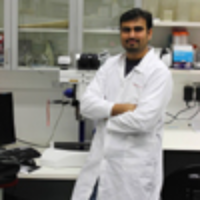Microalgal Derivatives as Potential Nutraceutical and Pharmaceutical: Boon to Human Beings
Published on: 18th June, 2024
Background: Marine resources have diverse biological and beneficial entities for human beings. Among them, microalgae are one of the eukaryotic photosynthetic organisms found in freshwater and marine environments with an immense source of metabolites. They consist of high nutraceutical and value-added compounds for health concerns. Objective: Most microalgal species like- chlorella, spirulina, Isochrysis, Nannochloropsis, etc. are found to synthesize biologically active secondary metabolites which are having high pharmaceutical and nutraceutical value. Some of the purely extracted compounds are Lecithin, fucoxanthin, astaxanthin, and most important Sulphur polysaccharides- fucose, galactose, xylose, rhamnose, etc. are providing anti-microbial, anti-fungal, anti-viral, anti-cancer and anti-diabetic activities.Methods: Many of the prior studies demonstrated the compilation of naturally derived secondary metabolites for their potential application in most fields. Because of their wide-ranging potential for use in biopharmaceutical and nutraceutical industries, microalgae have recently gained significant interest on a global scale.Result: Microalgae are both parts of the dietary ingredients and bioactive pharmaceuticals. A number of microalgal species have been explored for their significance towards their high-value products with their exceptional pharmacological and biological properties.Conclusion: This current review discussed the uses and benefits of microalgae for the manufacture of nutraceuticals and the medicinal use of diverse bioactive compounds.
Fabrication and Optimization of Alginate Membranes for Improved Wastewater Treatment
Published on: 27th January, 2025
Alginate, a naturally occurring biopolymer extracted from brown algae, presents a promising avenue for developing sustainable and efficient membranes for wastewater treatment. This review comprehensively examines recent advancements in the fabrication, modification, and application of alginate-based membranes for effective water purification. The paper delves into various fabrication techniques, including casting, electrospinning, and 3D printing, which influence the structural and functional properties of the resulting alginate membranes. To enhance performance, strategies such as crosslinking, incorporation of porogens, and surface functionalization are employed. These modifications optimize crucial properties like mechanical strength, porosity, selectivity, and antifouling resistance. Furthermore, Response Surface Methodology (RSM) has emerged as a valuable tool for systematically optimizing fabrication parameters, enabling researchers to identify optimal conditions for achieving desired membrane characteristics. The integration of alginate membranes with biological treatment processes, such as phycoremediation (utilizing microalgae) and mycoremediation (employing fungi), offers a synergistic approach to enhance wastewater treatment efficiency. By immobilizing these microorganisms within the alginate matrix, their bioremediation capabilities are amplified, leading to improved pollutant degradation and nutrient removal. In conclusion, alginate-based membranes demonstrate significant potential as a sustainable and effective technology for wastewater treatment. Continued research and development, focusing on optimizing fabrication processes and exploring innovative integration strategies with biological systems, will further advance the application of alginate membranes in addressing the pressing global challenge of water pollution.




